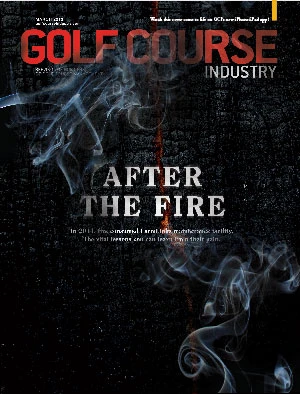 Henry DeLozier |
The days of wondering whether that was light at the end of the tunnel or a train bearing down on us finally may be over. After attending the PGA Merchandise Show, the Golf Industry Show and the CMAA World Conference, I’m feeling some of the optimism that filled the aisles at those events. But before we get too giddy, let’s ask ourselves: “How do we tap into the upswing and how do we make sure the momentum continues to build?” First, a little reality. Most golf businesses are only beginning their recovery. There will be continued vulnerability and volatility in some segments for some time. The tender nature of this recovery requires that business practices such as golf and club marketing, access (for memberships and tee times) and course conditioning must be kept simple and easy to use. However, evidence supports a recovery beyond that, which inevitably surfaces at trade shows and conferences. In its 2013 study of golfer consumer attitudes, Sports and Leisure Research Group notes a shift in golfing consumers. “After?a?post-recession??atness, U.S. golfers appear more poised to play and spend on golf than they have in the past three years,” says SLRG president Jon Last. Manufacturers will be among the beneficiaries. According to Last, irons, balls, apparel and drivers will see an uptick. SLRG also forecasts a favorable swing in sales of shoes and golf bags. Golf course architects and builders note that new projects finally are hitting the drawing boards. There is no indication that new courses will exceed the number of closures in 2013; it’s likely that we will see the eighth consecutive year of decline in golf course supply. But the steepness of the decline is declining, which may be a good or a bad trend, depending on your perspective and how far you think we need to go to restore the supply/demand balance. Listening to CMAA members at the World Conference in San Diego, it’s obvious many are anticipating increased membership demand. In fact, Steven Graves, president of Creative Golf Marketing, notes membership sales at strong clubs increased – with joining fees recalibrated to market rates – throughout 2012. The preferred categories for new members in many clubs are non-equity and non-voting right-to-use memberships. While noting that golfers are driving the industry momentum, Last also cautions that time pressures and other ongoing challenges lend a cautionary feel to golf’s comeback. In short, golf must lift itself up by its own bootstraps. But how? Each of the major trade associations has challenged its members to increase golfer participation. New ideas are abundant in the extreme. Programs such as Golf 2.0, launched by the PGA of America and now supported by the broad assortment of interested parties, are gaining traction. Every aspect of the user experience is important. Golf professionals must be helpful and friendly to timid newcomers. Superintendents must contribute to course set-ups that promote enjoyment and fun. Food-and-beverage managers must ensure that dining and entertainment options are family-oriented and sensitive to women’s expectations for the health and well-being of their families. Personal accountability is required for each touch point. Turning a surface ripple of opportunity into a genuine wave requires that all stakeholders invite return participation to expand golf’s numbers. This is a time during which we all must be engaged in growing the game. Sustained commitment to recovery is the key. Many influences external to golf and club categories are at work; but people involved in golf-related business will have a direct influence on the continued recovery of golf and club business categories. Three ingredients fuel continued recovery:
|
Get curated news on YOUR industry.
Enter your email to receive our newsletters.
Explore the March 2013 Issue
Check out more from this issue and find your next story to read.
Latest from Golf Course Industry
- Advanced Turf Solutions’ Scott Lund expands role
- South Carolina’s Tidewater Golf Club completes renovation project
- SePRO to host webinar on plant growth regulators
- Turfco introduces riding applicator
- From the publisher’s pen: The golf guilt trip
- Bob Farren lands Carolinas GCSA highest honor
- Architect Brian Curley breaks ground on new First Tee venue
- Turfco unveils new fairway topdresser and material handler





